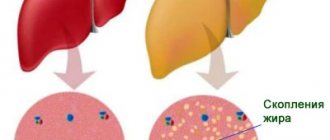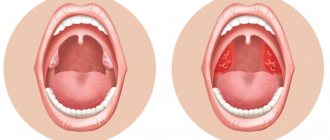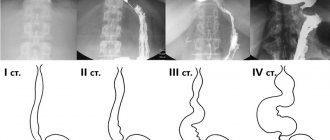Pneumonia or pneumonia is a viral disease that affects the lung tissue and interferes with the normal exchange of oxygen between air and blood. Inflammatory secretions that enter the alveoli do not allow the body to receive a sufficient amount of oxygen. And if the disease affects most of the lungs, acute respiratory failure develops.
Pneumonia affects people with weak immune systems, children and the elderly. Every year in Russia alone, 1.5 million people suffer from the disease, and 30% of them are young children and people over 70 years of age.
But pneumonia can and should be treated! And it is recommended to do this using an integrated approach. Treatment of any disease begins with a correct diagnosis. Therefore, at the first signs of the development of pathology, seek the advice of a specialist.
What are the first symptoms of pneumonia, how to approach treatment correctly and comprehensively, and what is required to diagnose the disease, we will tell you in this article.
Causes of pneumonia
Pneumonia develops when bacteria and viruses, as well as foreign agents, enter the lungs and affect part or all of the lung tissue. Pathological agents enter the human body through the respiratory route, and rarely through the blood.
Why does the disease develop quickly in the body of a person with reduced immunity? Bacteria are constantly present in our body, but protective mechanisms do not allow them to multiply, causing pathology. But if the immune system is weakened, harmful microflora increases in population, which leads to the appearance of an inflammatory process.
Viral pneumonia also often develops against the background of the spread of colds of the upper respiratory tract (bronchitis, tracheitis). Pneumonia can also be caused by hypothermia, stress, overwork, or smoking abuse. The risk of developing the disease increases in people with chronic diseases and obesity.
Rating of remedies for pneumonia
The entire editorial staff of the portal reviewed several dozen pharmaceutical products demonstrating high demand. We were able to determine the top ranking nominees based on medical practice and recommendations of leading experts. We also assessed each applicant on a number of characteristics:
- Group – antibiotics, NSAIDs, antivirals, antitussives, bronchodilators;
- Active substance – synthetic, natural component, combination;
- Release form - solid, liquid, powder, for oral administration, externally;
- Indications – age, stage of disease development, presence of complications;
- Treatment regimen - doses, frequency of administration, course duration, other nuances;
- Tolerability – bioavailability of the composition, degree of digestibility, speed of action;
- Restrictions – conditions when use is undesirable and strictly prohibited;
- Risks – the likelihood of developing adverse reactions of the body, allergies;
- Compatibility – which medications it combines with and which it conflicts with;
- Special instructions – recommendations for pregnant and breastfeeding women.
A lot of work done by Vyborexperta.ru helped determine what medications are used to treat pneumonia in adults and children. The review included only those drugs that have an evidence-based clinical basis, positive experience in treating such a disease, and the maximum percentage of favorable reviews from doctors and patients.
The best remedies for bronchitis
Signs of pneumonia in an adult
When the disease appears, a person’s body temperature rises, which can reach 38°, there is general weakness throughout the body, a headache, the patient wants to lie down and relax. After a few days, a strong paroxysmal cough appears and sputum appears.
Pain in the chest, especially at the site of inflammation, as well as the appearance of shortness of breath indicate the seriousness of the situation and clearly indicate pneumonia.
General signs are listed here, but the nature and timing of their manifestation may differ depending on the type of pneumonia. With viral pneumonia, the first symptoms appear quickly and the patient feels a sharp deterioration in health. From the very beginning of the disease, muscle pain, high body temperature, severe headache, and a painful dry cough are observed.
Bacterial pneumonia, on the contrary, develops gradually. The disease begins only 2 weeks after the first symptoms appear. After this, there is a sharp relief, an improvement in the general condition of the patient, then the temperature rises sharply again, a headache occurs, the cough intensifies, and purulent sputum appears.
One of the serious types of the disease is atypical bilateral pneumonia, which extensively affects the lung tissue and develops respiratory failure. In terms of its symptoms, bilateral pneumonia resembles a cold viral infection, and the characteristic wheezing is not yet heard in the lungs. Many begin to treat themselves, which aggravates the condition.
At first, the sick person thinks that his condition has improved, the symptoms of the pathology begin to go away. But then the cough worsens and the second wave of the disease begins.
Symptoms may vary slightly in older people. First of all, a dry cough and shortness of breath appear during minor physical exertion on the body or even at rest. Often the disease occurs without fever in older people.
Anti-inflammatory drugs for pneumonia
If mild pneumonia requires the use of antibacterial drugs, then in the case of severe intoxication syndrome or febrile fever, the course is supplemented with anti-inflammatory drugs (NSAIDs). They fight symptoms - lower the temperature, eliminate swelling, relieve pain. The portal's editors considered about 10 of the most popular NSAIDs, but two nominees received the highest percentage of approval.
Ibuprofen
A popular remedy in the form of effervescent tablets or extended-release capsules for adults, suppositories or syrup for young patients. The synthetic component in the composition, a derivative of phenylpropionic acid, has strong antipyretic, anesthetic, and anti-inflammatory properties. It suppresses the biosynthesis of mediators of inflammation and pain. The liquid form can be given to babies from 3 months. The list of indications includes pain of different nature, location, origin, feverish reactions to colds, infections. Can be taken during the first and second trimesters of pregnancy. There is a negative effect on the digestive organs, so serious gastrointestinal pathologies are a direct contraindication.
Advantages
- Highly effective against symptoms;
- Elimination of pain of any strength, localization;
- Forms for adults, children;
- Allowed for pregnant women;
- Favorable safety profile;
- Inexpensive.
Flaws
- Harmful effects on the stomach;
- Does not eliminate the cause of the disease.
Regardless of the severity of the disease or the patient’s age, Ibuprofen can be taken for no longer than 5 days. If these are tablets, then 1 piece 3-4 times a day, preferably after meals. For children, the dose is calculated by weight - 5-10 mg per kilogram of weight, application after 4-6 hours.
Nurofen
A representative of the NSAID group, which is based on ibuprofen, a substance derived from phenylpropionic acid. It is used to suppress the inflammatory process, relieve pain, and relieve fever. Several forms of release are sold - solid or effervescent, capsules, suppositories, suspension, gel for external use. All of them are divided into 2 types - children from 3 months of age, adult Nurofen. The highest effectiveness was observed in the drug where the composition is supplemented with codeine with an antitussive effect. Indications are various colds with fever, pain of any nature, localization. Unlike its predecessor, this is a patented drug. In rare cases, the doctor allows pregnant women to take it in minimal doses in the first or second trimester.
Advantages
- Performance;
- Long-acting syrup;
- Large list of indications;
- Ease of use;
- Forms of increased bioavailability;
- European production.
Flaws
- Price;
- The syrup contains sugar.
The antipyretic and analgesic effect of liquid forms occurs faster than that of analogues. The maximum dose per day is 3-4 tablets of 200 mg, divided into several doses. The course of treatment should not exceed 3-5 days. A child is allowed a suspension of about 30 mg/kg per day.
Is pneumonia contagious?
The inflammatory process in the pulmonary system most often appears due to the multiplication of the virus and as a complication of influenza or acute respiratory viral infection. In such cases, it is impossible to get sick from pneumonia itself, but it is easy to catch the disease that became the root cause. That is, pneumonia itself is not contagious, and the development of inflammation in the lungs is an independent complication that arose against the background of a weakened immune system and improper self-medication.
Can pneumonia go away on its own without treatment?
Pneumonia or pneumonia is one of the most dangerous and common diseases of the respiratory system. The danger is that specialists do not always have time to make a diagnosis in time. People do not go to the doctor with a cough and fever, but prefer to stay at home for a couple of days until the disease spreads. The condition can worsen to bilateral pneumonia, which carries severe consequences, long-term treatment or chronic diseases.
A hundred years ago, before the discovery of penicillin, pneumonia took the lives of those who fell ill. Science and medicine do not stand still - our lives have changed dramatically in a hundred years. People have antibiotics in every medicine cabinet, and hospitals carry out operations using modern equipment. However, according to the Russian Academy of Sciences, pneumonia is still on the list of the deadliest infectious diseases and should not be underestimated.
Pneumonia will not go away on its own. This disease can lead to death, so seeing a doctor is vital. Treatment for pneumonia should be prescribed by a doctor. It is he who determines whether antibiotics are needed and which ones, and also decides on the severity of the disease.
With pneumonia there is always a high temperature and a strong cough, is this true?
This is a very big and dangerous misconception. Errors in diagnosing the disease are one of the main causes of mortality from pneumonia. According to doctors, up to 30% of cases of pneumonia are not diagnosed or detected too late, since people do not see the need to see a doctor before a high temperature appears. As a result, this leads to a deterioration in the person’s condition and the development of severe complications. Asymptomatic, hidden, but real pneumonia often develops in children and the elderly. The main and most dangerous problem in diagnosing pneumonia in elderly patients is that the disease successfully disguises itself as various chronic diseases. In this case, it passes without the most important marker of the disease for us - without fever. How then do you understand that pneumonia is going away in an adult? - Monitor your body, and promptly consult a doctor if your health worsens.
If you have what signs you should consult a doctor?
- increased sweating;
- weakness;
- dyspnea.
By the way, the myth that pneumonia is necessarily accompanied by a severe cough is just a myth. This problem is mostly characteristic not of the older generation, but of children. There are often cases when pneumonia progresses, but there is no cough. If you do not consult a doctor in time and do not make a diagnosis, the child may experience chronic consequences.
Pneumonia in children can be identified by the following symptoms:
- shortness of breath and chest pain when moving;
- pain when turning the body
- inability to take a deep breath;
- tachycardia;
- exercise intolerance;
- fast fatiguability;
- weakness;
- the person looks pale, but with a bright, unhealthy blush.
How is pneumonia transmitted?
The disease can be transmitted in different ways, including:
- Airborne method. During the disease, droplets form on the mucous membrane of the mouth and nose, which spread through the air during sneezing and coughing. You can become infected by airborne droplets in any public place: hospital, store, public transport. The pathogenic agent spreads through the air along with particles of mucus, sputum, and saliva.
- Contact. The infection is also transmitted through contact - shaking hands, hugging, kissing. People become infected when they touch contaminated objects or when they touch their mouth, eyes, or nose with dirty hands.
- Domestic. The infection can be transmitted through shared towels, dishes and bedding. Therefore, the patient needs to be provided with personal hygiene items, and, if possible, change and wash them more often.
- Fecal. The virus survives up to two days in fecal matter with normal bowel movements. You can easily acquire the disease from improper toilet cleaning or personal hygiene. To prevent infection, especially from young children, it is important to constantly wash your hands after cleaning the child's potty, change diapers frequently and thoroughly wash the area where bowel movements occur.
However, personal hygiene items must be handled very carefully. It has been proven that the viral microorganism can survive up to 4 hours on any surface. Morbid bacteria are not afraid of frost; even with bleach it can be destroyed only five minutes after direct treatment.
Rational antibacterial therapy of pneumonia
How quickly should antibiotic therapy be started for pneumonia? What is the duration of antibacterial therapy and what does it depend on? Does it make sense to use a combination of two antibiotics and under what circumstances is such therapy used?
The problem of antibacterial therapy (AT) for pneumonia is still relevant, since frequent strategic and tactical errors in the treatment of this disease have a significant impact on its outcome. The presence of a large arsenal of antibacterial drugs (ADs), on the one hand, expands the possibilities of AT for various infections, and on the other hand, requires the doctor not only to be aware of numerous ARs (spectrum of action, pharmacokinetics, side effects, etc.), but also to have the ability to navigate issues of microbiology, clinical pharmacology and other related disciplines.
Prescribing and carrying out AT for pneumonia requires the doctor to take a whole range of measures, and each of his decisions determines the effectiveness of the prescribed treatment. When prescribing AT, the doctor should be guided by the following key parameters:
- selection of initial AP for empirical AT;
- dose and route of administration of AP;
- assessment of the effectiveness of the initial AP;
- adequate replacement of ineffective AP;
- AT duration;
- possibility of stepped AT;
- justification for the need for combined AT;
- assessment of toxicity and tolerability of AP.
Selecting the initial AP
AT should begin as early as possible, from the moment pneumonia is diagnosed. According to some data, if the administration of the first dose of AP is delayed by more than 8 hours from the moment of hospitalization, there is a significant increase in mortality among elderly and senile patients. The need for antibiotics to be prescribed as early as possible (before receiving the results of a microbiological study) is due to:
- rapid decompensation of concomitant pathology;
- worsening prognosis;
- lack of sputum or difficulties in obtaining it for examination in some situations;
- frequent negative results of sputum examination;
- difficulties in interpreting the data obtained (colonization of respiratory mucous membranes, sputum contamination);
- the inability to isolate certain pathogens from sputum (mycoplasma, legionella).
The main guidelines when choosing an initial AP for the treatment of pneumonia are:
- clinical and epidemiological situation;
- antimicrobial spectrum of action of the selected drug;
- sputum Gram stain results;
- AP pharmacokinetics;
- trend and likelihood of antibiotic resistance;
- severity of pneumonia;
- AP safety in a specific situation;
- possibility of step therapy;
- AP cost.
The “situational approach” when choosing the initial antibiotic for the treatment of pneumonia is justified by the “attachment” of some pathogens of pneumonia to certain clinical and epidemiological situations. In addition, the prescription of AT is carried out immediately after diagnosis in the absence of data from microbiological examination of sputum, and often without the prospect of etiological verification of the etiological variant of pneumonia.
Perhaps the greatest number of errors occurs at the very beginning of AT, at the stage of empirical therapy, when choosing an AP. Most often, errors are associated with underestimation or incorrect assessment of clinical and epidemiological situations, X-ray and laboratory data, which suggest an approximate etiological variant of pneumonia. It is necessary to remember the different etiologies of pneumonia in young and elderly people, in previously healthy patients and patients with various background pathologies, in those with pneumonia at home or in the hospital, in patients in the surgical or intensive care unit, etc. Lack of clear criteria for choosing the initial AP leads to the fact that the doctor is guided by completely different subjective criteria, for example, he gives preference to the most familiar, well-known and frequently prescribed AP, or, conversely, prescribes a new, more effective, in his opinion, AP, or opts for a cheaper and available AP, etc. For example, cephalosporins with antipseudomonas activity (ceftazidime, cefpirome) or antipseudomonas penicillins (mezlocillin, carbenicillin) are erroneously prescribed for community-acquired pneumonia of non-severe course in young patients not burdened with any concomitant pathology. In this case, the most likely etiological agents, along with pneumococcus, may be the so-called atypical pathogens (legionella, mycoplasma, chlamydia). It is not justified to prescribe antibiotics such as vancomycin or meropenem, which are considered “reserve”, to a patient with mild community-acquired pneumonia. This approach not only contradicts the principles of choosing the initial AM, but is also economically irrational. In addition, a medical error in this case is fraught with the formation of microbial resistance to these APs. In the above situation of community-acquired pneumonia in a young patient who is not burdened with concomitant pathology, it is more justified to prescribe aminopenicillins (amoxicillin, ampicillin) or macrolides (erythromycin, azithromycin, clarithromycin, spiramycin), which are also active against probable atypical pathogens (Legionella, Chlamydia, Mycoplasma). This allows for the most complete coverage of all etiologically significant pathogens (third generation cephalosporins, vancomycin and meropenem are not active against atypical pathogens). In table Table 2 provides possible reasons for the ineffectiveness of AT and methods for their correction.
Among fluoroquinolone APs for community-acquired pneumonia, the prescription of new fluoroquinolones (levofloxacin, moxifloxacin), which have high activity against S. pneumoniae, H. influenzae and atypical pathogens, is justified. At the same time, the prescription of gram-negative fluoroquinolones (ciprofloxacin, ofloxacin) is irrational, since these APs have low antipneumococcal activity.
On the other hand, when choosing an AP for the treatment of hospital-acquired pneumonia, one should focus on the high probability of the etiological role of gram-negative microorganisms, including P. aeruginosa (late pneumonia in intensive care units, long-term treatment with glucocorticoids, etc.). In such situations, it is more justified to prescribe third-generation cephalosporins with antipseudomonas activity (ceftazidime), or antipseudomonas penicillins (piperacillin), or fluoroquinolones (ciprofloxacin)
The pharmacokinetic properties of drugs can serve as another guideline when choosing an initial AP. The main pharmacokinetic properties that must be taken into account when choosing an antigen:
- concentration in lung tissue and alveolar macrophages;
- bioavailability of the drug when taken orally;
- half-life duration - dosage regimen;
- the presence of a post-antibiotic effect;
- no interaction with other medications;
- routes of elimination from the body.
Macrolides, tetracyclines and fluoroquinolones penetrate well into tissues. When penetrating into the cell, the drug should not cause damage, which is most characteristic of tetracyclines. The penetration of macrolides into the cell is so pronounced that their extracellular concentrations may be insufficient to suppress pneumococci in pneumococcal bacteremia. Taking this into account, in severe pneumonia with a high probability of bacteremia, monotherapy with macrolides is unjustified.
The pharmacokinetic properties of some APs (ciprofloxacin, third and fourth generation cephalosporins, etc.) allow their use no more than 2 times a day. The optimal pharmacokinetic parameters of new (respiratory) fluoroquinolones (levofloxacin, moxifloxacin), their high, almost complete bioavailability when taken orally, make it possible to prescribe them once a day, both parenterally and orally.
Antibiotic resistance. When choosing an AP for empirical AT of pneumonia, one should take into account the tendency of a number of microorganisms to antibiotic resistance (AR) and the regional “microbial ecological situation”, that is, the predominant spectrum of microorganisms and their sensitivity to antibiotics in different regions, hospitals, departments, etc.
One of the main problems of clinical importance is the resistance of S. pneumoniae to penicillin. The risk of penicillin resistance in S. pneumoniae increases in the presence of the following factors: the age of patients is less than 7 years and older than 60 years, the presence of severe somatic diseases, frequent and long-term treatment with antibiotics, and living in nursing homes. Cross-resistance to macrolides is possible. At the same time, the resistance of S. pneumoniae to penicillin and macrolides does not correlate with resistance to respiratory fluoroquinolones, which makes the choice of respiratory fluoroquinolones (levofloxacin, moxifloxacin) rational and justified in such situations. Resistance of S. pneumoniae to levofloxacin remains low and does not exceed 0.8%. According to the recommendation of the American Thoracic Society, it is levofloxacin and moxifloxacin that are approved for use in community-acquired pneumonia caused by resistant S. pneumoniae.
Another problem that arises in connection with antibiotic resistance is the production of b-lactamase by H. influenzae, which is usually observed in patients with COPD, who are often treated with AP in connection with exacerbations of the disease. Taking into account this factor, in the development of pneumonia against the background of COPD, the prescription of protected penicillins (amoxicillin/clavulanate, ampicillin/sulbactam) is justified. Since the mechanisms of penicillin resistance in S. pneumoniae and H. influenzae are different (membrane changes and b-lactamase production, respectively), protected penicillins are active against b-lactamase-producing H. influenzae and are ineffective against penicillin-resistant S. pneumoniae. At the same time, “protected” penicillins can remain active against penicillin-resistant staphylococci (staphylococci produce b-lactamase). Therefore, in situations where the likelihood of staphylococcal community-acquired pneumonia is high (after influenza, chronic alcohol intoxication), the prescription of inhibitor-protected penicillins is justified.
Of great clinical importance is the identification of resistance in patients with nosocomial pneumonia (methicillin-resistant S. aureus), which determines the tactics of AT and serves as a rationale for prescribing vancomycin. At the same time, the choice of the latter as an empirical AT for even severe pneumonia, as mentioned above, should be considered erroneous, and its prescription should be justified by the isolation of resistant S. aureus.
It is irrational to prescribe co-trimoxazole or tetracycline as an initial AP for community-acquired pneumonia due to the high level of resistance of the main pathogens of pneumonia to these APs.
Gram staining of sputum is an important guideline for choosing the initial antibiotic, taking into account the Gram affiliation of microorganisms. It is advisable to perform bacterioscopy and culture of sputum containing a sufficient number of neutrophils. A negative result with Gram stain of sputum does not always indicate the absence of microorganisms in the sputum, but may be due to an insufficient number of them (less than 104). If about 10 microorganisms are detected in one field of view, this means that their number is at least 105 and is approaching the diagnostic titer.
AP cost. When initially choosing an antibiotic, its cost should be considered taking into account the adequacy of the antibiotic in a given situation, as well as the additional costs of treatment in case of ineffectiveness, development of complications, undesirable effects, etc. It should be borne in mind that not only the cost of the antibiotic itself is important, but and the total costs of treatment, which, if a cheaper but ineffective AP is prescribed in this situation, may be higher.
An increase in treatment costs is usually associated with an incorrect initial choice of AP, combined AT without proper indications, inadequate duration of AT, and underestimation of the risk of undesirable toxic effects of AP.
AP dose and route of administration
Often, inadequate doses of AP are used to treat pneumonia, and both insufficient and excessive doses of the drug can be prescribed. If the dose of AP is insufficient and the concentration of the drug necessary to eradicate the corresponding pathogen is not created in the blood, then this is not only one of the reasons for the ineffectiveness of AP, but also creates real preconditions for the formation of resistance of the microorganism. Errors in choosing the optimal dose can be associated both with the prescription of an insufficient single dose and with an incorrect dosage regimen (insufficient frequency of administration).
The incorrect choice of intervals between AP administrations is usually due not so much to the difficulties of parenteral administration of drugs in an outpatient setting or the negative attitude of patients, but rather to the lack of awareness of doctors about the pharmacodynamic and pharmacokinetic features of APs, which should determine their dosage regimen. Thus, a number of APs have a so-called post-antibiotic effect, that is, the ability to suppress the growth of microorganisms even when the level of APs in the blood decreases below the MIC. Aminoglycosides, fluoroquinolones, and tetracyclines have such a postantibiotic effect against gram-negative microorganisms. The severity of the bactericidal effect of these groups of APs depends mainly on the peak concentration in the blood, therefore, when prescribing these drugs, it is important that the patient receives a sufficient single dose, and the intervals between administrations may be longer. On the other hand, b-lactam APs, with the exception of carbapenems, are practically devoid of post-antibiotic effect. Their bactericidal effect does not increase with increasing levels of drugs in the blood. Therefore, when choosing b-lactam APs (penicillins, cephalosporins), for their optimal action, long-term maintenance of MIC in the blood is much more important, that is, more frequent (without omissions) administration of the drug. Taking into account the above, two- or three-time administration of penicillins or cephalosporins of the first and second generation, even in an adequate single dose, should be considered erroneous. On the other hand, when prescribing aminoglycosides, a sufficient single dose is required, which can be administered even once. Prescribing AP in doses exceeding the optimal ones can cause the development of superinfection due to the activation of the patient’s own microflora. Superinfection usually occurs when prescribing APs that reduce the level of non-spore anaerobic flora in the intestine (penicillins, lincomycin, tetracyclines). In this case, usually, after a short-term effect against the background of AT, there is an increase in temperature and a deterioration in the patient’s condition, which is mistakenly interpreted as the ineffectiveness of AT and entails an unjustified replacement of AP, which in turn also does not have the expected effect.
It should be remembered that the use of large doses of AP increases the risk of toxic effects. This applies primarily to potentially toxic drugs such as aminoglycosides, for which strict daily doses have been established. Exceeding such “threshold” doses is unacceptable, especially in patients with a high risk factor for complications (elderly and senile age, impaired renal function, taking other potentially nephrotoxic drugs, etc.)
The administration of large doses of AP may, however, be justified when there is a high risk of resistant strains or when a pathogen with moderate resistance to the corresponding AP is isolated. Thus, it is possible to prescribe large doses of amoxicillin (up to 3 g/day) for pneumonia caused by penicillin-resistant pneumococcus, since penicillins and cephalosporins can retain their effectiveness.
The route of administration of AP is determined by many factors, including the severity of pneumonia, the patient’s condition, the pharmacokinetic characteristics of AP, etc. If in a number of situations with lower respiratory tract infections, the parenteral route of administration has no alternative (impaired consciousness, brainstem disorders with impaired swallowing, intestinal pathology etc.), then in other cases parenteral AT requires certain indications and should be justified and not arbitrary. The doctor’s desire to “facilitate and simplify” treatment (both for the patient and for the nursing staff), prescribing APs orally without taking into account the specific clinical situation and pharmacokinetics of APs, may become one of the reasons for the insufficient effect or even ineffectiveness of treatment of pneumonia. AP should not be prescribed orally for severe pneumonia, especially for drugs with low bioavailability (ampicillin, cefuroxime axetil), which do not allow achieving the optimal concentration of AP in the blood. At the same time, in patients with mild community-acquired pneumonia in the absence of complications and severe background pathology, oral AT is acceptable. In such situations, the parenteral route of administration of AP is not only unjustified, but also more expensive. Meanwhile, oral forms of some APs are not widely used in the treatment of community-acquired pneumonia. For example, the frequency of parenteral and oral use of cephalosporin antibiotics in Russia is 94.2 and 5.8%, respectively.
Evaluation of the effectiveness of the initial AP
The critical period for assessing the effectiveness of AP is considered to be 48-72 hours from the moment of its prescription. Typically, the criterion for the effectiveness of AP is a decrease or normalization of the patient’s body temperature and a decrease in signs of intoxication. In cases where fever from the very beginning of the disease is not pronounced or is completely absent, one has to focus on other signs of intoxication (headache, anorexia, cerebral symptoms, etc.), as well as on the absence of progression of the disease during the period of treatment.
Unfortunately, we often have to deal with the fact that the patient continues to receive the prescribed AP for a week or more, despite the absence of an obvious clinical effect. Continuing AT, despite its ineffectiveness, is fraught with many negative consequences. At the same time, the prescription of another, more adequate AP is delayed, which contributes to the progression of pulmonary inflammation (which is especially important in severe pneumonia and in patients with concomitant pathologies), the development of complications, and prolongation of treatment. In addition, the risk of side (toxic) effects of AT and the development of antibiotic resistance increases. One should not ignore the fact that the ineffectiveness of the therapy entails a loss of confidence in the doctor of the patient, as well as his relatives. We also cannot discount the economic costs associated with inadequate prescription of APs (wasteful consumption of ineffective APs, excessively long hospital stay for the patient, additional costs for treating the toxic effects of APs, etc.).
There are also errors associated not only with assessing the effectiveness of AT, but also with replacing an ineffective AM with another, that is, with changing the AM. In the absence of microbiological research data, the principle of choosing an AP remains the same, that is, one has to focus on the clinical situation, taking into account the ineffectiveness of the initial AP and other additional signs. The lack of effect from the initial AP, to a certain extent, should serve as an additional guideline for choosing a second AP. For example, the lack of effect from b-lactam APs (penicillins, cephalosporins) in a patient with community-acquired pneumonia suggests the presence of legionellosis or mycoplasma pneumonia (taking into account, of course, other signs). In turn, this can be considered as a justification for prescribing APs from the group of macrolides (erythromycin, azithromycin, spiramycin, clarithromycin, etc.) or new generation fluoroquinolones (levofloxacin, moxifloxacin).
Combined AT
Today, when doctors have a wide arsenal of APs at their disposal, the indications for combined AT are significantly narrowed and the priority in AT for pneumonia remains with monotherapy. The main indications for prescribing combined AT are severe pneumonia, a high probability of mixed flora, the presence of pneumonia against the background of severe immunodeficiency (malignant tumors, treatment with cytostatics and immunosuppressants, etc.). Unfortunately, we have to deal with situations in which patients with mild pneumonia, in the absence of complications or severe background pathology, are prescribed two APs. The prescription of two APs is usually justified by the arguments that each of the APs has a different spectrum of action and there is a greater chance of quickly achieving a therapeutic effect in the conditions of empirical AT.
The advisability of combining macrolides with cephalosporins in the treatment of severe pneumonia is due to the likelihood of Legionella pneumonia and the difficulties of its etiological verification. It has been shown that mortality in community-acquired pneumonia, especially among elderly patients, is lower when prescribing combination therapy with second- and third-generation cephalosporins in combination with macrolides compared with monotherapy with third-generation cephalosporins. However, mortality with monotherapy with modern respiratory fluoroquinolones (levofloxacin) is also lower than with monotherapy with third-generation cephalosporins.
The negative aspects of unjustified combined AT are the selection of multiple resistant strains of microorganisms and the occurrence of superinfection, an increased risk of developing toxic effects due to the fact that the adverse effects of the drugs are cumulative, as well as an increase in the cost of treatment. The combined administration of APs that are excreted by the kidney is especially undesirable, since such therapy creates a real risk of nephrotoxic effects. Moreover, with irrational combinations, a decrease in the effectiveness of therapy due to AP antagonism is possible. An example of irrational combinations are such fixed combinations of APs as oletethrin and tetraolean (drugs are practically not used at present), in which the macrolide oleandomycin is contained in an insufficient dose, and tetracycline cannot be used in most cases as an initial AP for the treatment of pneumonia. The insufficient dose of oxacillin and ampicillin contained in the combined drug Ampiox does not allow us to recommend this drug for community-acquired pneumonia, including cases of suspected staphylococcal etiology of pneumonia.
Duration of AT pneumonia
The main goal of AT is primarily to eradicate the pathogen or inhibit its further growth, that is, to suppress microbial aggression. The duration of AT can be determined by many factors, including the etiological variant of pneumonia, the presence of complications, etc.
In cases of uncomplicated community-acquired pneumococcal pneumonia, the duration of AT is 7-10 days. Legionella and mycoplasma pneumonia require long-term AT - up to 3 weeks, since these etiological agents have intracellular localization. In case of complicated pneumonia, often caused by staphylococcus (pulmonary destruction, empyema, abscesses), the duration of AT should also not be less than 3 weeks.
The actual inflammatory reaction of the lung tissue, which is manifested by various clinical and radiological signs (auscultation pattern, persistent radiological infiltration, acceleration of ESR), regresses more slowly and does not require continued AT. In this regard, the tactics according to which a patient with persistent radiological signs of pulmonary infiltration, crepitating rales (crepitacio redux), an increase in ESR with normalization of body temperature and the disappearance (or decrease) of signs of intoxication continue to receive AT should be considered erroneous. An even more serious mistake is replacing one AP with another in such situations, which the doctor classifies as the ineffectiveness of the initially prescribed AT. In some patients, after the disappearance of signs of intoxication and even regression of inflammatory changes in the lungs, weakness, sweating, and low-grade fever may persist for a long time. The latter is often mistakenly regarded by the doctor as a manifestation of an incompletely controlled bronchopulmonary infection, which is also “confirmed” by radiological data in the form of changes in the pulmonary pattern or “residual effects of pneumonia” and usually entails the continuation of AT or additional prescription of AP, despite the absence of changes in the side of the blood. Meanwhile, such a clinical situation is often caused by autonomic dysfunction after a pulmonary infection (post-infectious asthenia) and does not require AT, although, of course, in each specific case a thorough examination of the patient and decoding of all existing symptoms are necessary. Unreasonably prolonged AT of pneumonia increases the risk of developing superinfection, microbial resistance, side and toxic effects of AP, and also increases treatment costs. Situations with delayed radiological resolution of pneumonia require special consideration.
Step therapy
The so-called step-by-step therapy is unreasonably rarely used, which involves parenteral administration of an AP as the first stage, and then, after achieving a clinical effect, a transition to the oral route of administration of the same AP. This opportunity exists when choosing APs that have both parenteral and oral dosage forms. Studies have shown that stepwise therapy does not worsen the results of treatment of pneumonia and the prognosis of the disease. The obvious advantages of stepwise AT are providing greater comfort of treatment, reducing hospitalization time and the ability to continue treatment on an outpatient basis, as well as reducing treatment costs
Among the factors influencing the effectiveness of stepwise AT are low bioavailability of the drug, impaired intestinal absorption, and the risk of patient non-compliance with the dosage regimen. However, these disadvantages can be avoided in most cases.
The main requirements for the transition from parenteral to oral administration of AP are the following:
- the presence of antibiotics in oral and parenteral forms;
- effect of parenterally administered antibiotic;
- stable condition of the patient;
- the ability to take drugs orally;
- absence of intestinal pathology;
- high bioavailability of oral antibiotic.
Many modern APs available in the doctor’s arsenal meet these requirements, including macrolides (erythromycin, azithromycin), respiratory fluoroquinolones (levofloxacin, moxifloxacin), which, along with other properties (spectrum of antimicrobial activity, pharmacokinetics, safety), makes it possible to consider their use rational for community-acquired pneumonia.
Prevention and control of side effects and toxic effects
When prescribing and conducting AT for pneumonia, increased attention should be paid to the safety of AP, and therefore numerous factors (age, concomitant pathology, taking other medications, etc.) that determine the tactics of AT should be taken into account. Inadequate assessment of the characteristics of a given patient entails the development of side toxic effects. Most often, errors can occur in the following situations:
- age of patients (children, old people);
- pregnancy;
- severe concomitant pathology with functional disorders of various organs and systems;
- drug therapy for concomitant diseases;
- allergic reactions to various APs.
Pregnant women should not be prescribed fluoroquinolones, clindamycin, metronidazole. In addition, aminoglycosides, vancomycin, and imipenem should be used with caution.
The presence of concomitant pathology in some cases creates difficulties in carrying out AT, which can lead to errors in the choice of AP, its dosage, routes of administration, duration of AT, etc. The errors may be based either on the failure to identify concomitant pathology or its underestimation in relation to toxic effects of the AP, or, finally, insufficient knowledge of the pharmacokinetic characteristics of the selected AP. If a patient has renal failure, preference should be given to choosing an antiretroviral agent with predominantly extrarenal elimination (cefoperazone) or with a dual elimination route (ciprofloxacin). It is erroneous to prescribe potentially nephrotoxic APs (aminoglycosides, carbapenems) without dose adjustment in patients with concomitant renal failure. It is also dangerous in such situations to use a combination of APs that have nephrotoxic properties (aminoglycosides and cephalosporins, with the exception of cefoperazone).
Particular attention should be paid to the presence of concomitant, often multiple pathologies with functional disorders of organs and systems in elderly and senile patients. An age-related decrease in glomerular filtration rates, along with a high incidence of nephroangiosclerosis in the elderly, should be considered as one of the factors influencing the choice of AP, which, unfortunately, is not always taken into account in clinical practice.
In the presence of reliably established hypersensitivity to penicillin, the prescription of other b-lactam APs (cephalosporins, carbapenems) should be considered an error. As an alternative to AP, fluoroquinolones and macrolides can be prescribed. However, it should be borne in mind that reactions of another origin (vascular, vegetative, etc.) are often mistaken for an allergy to antibiotics, and therefore patients’ indications of such “intolerance” should be critically assessed and the existing situation should be analyzed more carefully. However, intradermal tests for AP are dangerous, since there is the same risk of severe anaphylactic reactions.
Thus, managing a patient with pneumonia requires the doctor to make key decisions taking into account currently available standards of treatment and appropriate adjustment of the prescribed AT, depending on the clinical situation. The algorithm for managing a patient with community-acquired pneumonia is presented in the figure.
Pneumonia and bronchitis: what is the difference?
Both diseases affect the human respiratory system, which means they have similar symptoms. It is often difficult to distinguish the two pathologies from each other.
| Pneumonia | Bronchitis |
| In most cases, it is accompanied by a sharp increase in temperature to 38-39° and a feverish state. There is a slight increase in temperature. | Accompanied by a strong dry cough. In some cases, sputum may appear greenish or streaked with blood. Wet cough, sputum is light in color. |
| When listening to the chest, “wet” rales are heard. | When listening to the chest, “dry” wheezing is heard. |
Modern methods of treatment
Bacterial pneumonia in mild and moderate cases can be treated at home, under the supervision of a doctor.
In severe forms - in the clinic, intensive care ward and resuscitation room. Bed rest, a light diet, and plenty of fluid intake (or intravenous administration) are indicated. The main treatment is antibiotics: the doctor selects them based on test data. Most often, penicillins, cephalosporins or macrolides are used. If these are separate forms of pneumonia, more narrowly targeted drugs are selected. Medicines are taken orally or by intramuscular injection for up to 14 days; in severe cases they are administered intravenously.
Treatment is complemented by:
- antipyretic drugs, anti-inflammatory drugs (Nurofen, Nise, Ibuklin, Rinza, Panadol);
- short course hormonal drugs;
- droppers with protein, saline solutions, vitamins and glucose;
- oxygen therapy;
- drugs for coughing up sputum (Bromhexine, ACC, Ambroxol, Fluimucil).
As the condition improves, the doctor adds breathing exercises, massages, physiotherapy, exercise therapy and subsequent rehabilitation in a sanatorium to the treatment.
How is pneumonia diagnosed?
If a child suffers from the disease, you should seek examination from a pediatrician. If you are an adult, make an appointment with a therapist who will refer you to a specialist if necessary. The doctor will conduct an external examination, collect anamnesis, study the medical history and learn about the symptoms of the disease.
You will be sent for laboratory tests:
- General blood analysis;
- General urine analysis;
- Sputum analysis is carried out to determine the inflammatory process in the body, as well as the causative agent of pneumonia and its sensitivity to antibiotics.
Among the diagnostic research methods you will be prescribed:
- Chest X-ray - shadows appear in the images in areas of tissue damage;
- Computed tomography and magnetic resonance imaging are used as additional measures when other methods do not allow an accurate diagnosis.
What is the best remedy for pneumonia?
It is actually impossible to name one nominee from the presented rating to recommend to buyers. Treatment of this disease requires an integrated approach. We conducted a comparative analysis of the pros and cons of each review position, the opinions of doctors, and reviews of their patients, and then summed up the following results:
- Sumamed is a long-acting antibacterial remedy for pneumonia for children;
- Clarithromycin is a safe antibiotic with rapid elimination from the body;
- Nurofen is a quickly effective patented NSAID without age restrictions;
- Ergoferon is a homeopathy that supports the immune system without side effects;
- Doctor Mom is a natural cough remedy without age restrictions;
- Bromhexine – the ability to cure coughs of any nature;
- Salbutamol is an ambulance for severe attacks of suffocation.
The list of suitable medications for such a diagnosis is extensive, but a competent physician should always have the final say. A set of measures will never be limited to one medication; it will be quite difficult to choose a complex on your own. The expert rating showed the most current offers of the pharmaceutical market.
Methods for treating pneumonia
If pneumonia is bacterial in nature, antibiotics are prescribed. Their effectiveness can be assessed after 48-72 hours. If the temperature subsides, the cough becomes less frequent, and the patient begins to feel better, the treatment continues. You cannot interrupt the course of medications, and it is important to take them correctly as prescribed by your doctor. If antibiotics do not help, another treatment is prescribed or changed to a drug from another group.
For viral pneumonia, antibiotics are not effective, so antiviral drugs are prescribed. Vitamins and immunomodulators can be prescribed as auxiliary substances.
Once the patient's body temperature has returned to normal, physical therapy can be prescribed. It allows you to remove phlegm from the lungs. For this purpose, herbal medicines are often taken, for example, licorice root or complex breast mixtures.
Along with drug treatment, patients need bed rest, meals containing protein and vitamins, and plenty of warm drinks. For the best effect, therapeutic methods are recommended - electrophoresis, inhalation, massage, magnetic therapy, etc.
Lifestyle and Home Remedies
These tips will help you recover faster and reduce the risk of complications:
Take more time to relax . Do not return to school or work until your temperature is normal and your coughing has stopped. Be careful even when you start to feel better: since pneumonia can recur, it is best not to return to daily work until you have fully recovered. In all actions, consult your doctor.
Drink plenty of fluids , especially water.
Take your medications as prescribed by your doctor. Until complete recovery.








